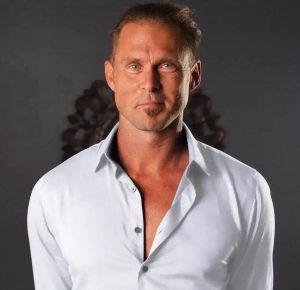ATTACHMENT: how our infancy relates to the ways we connect with our romantic partner
How Connection & Healthy Attachment Develops
Connection implies a felt sense of relation, a link or bond between one or more people or objects. Even though in our most isolated, self-absorbed states it can feel like we are an island unto ourselves, we really are not. If you notice some part of you wanting to isolate your personal self and escape to some other moment than what is here now, you are going in the direction of less presence. Even in moments of solitude, we can feel connected to the totality of Life. The essence of Life is interdependence and connection; life forms arise in mutual dependence—sometimes called dependent origination or dependent arising. Humans are social creatures and we have banded together in tribes and communities for hundreds of thousands of years to support each other in living. Sue Johnson, a renowned relationship therapist and foremost expect on adult bonding and connection, sites research in evolutionary biology and the latest neuroscience, stating the first and foremost instinct of humans is neither sex nor aggression; it is to seek contact and connection. ^1 NOTE 1 Love Sense Yes we do have aggressive and sexual tendencies, the former is an inherent property in the voluntary impulse to compete on the field of life and improve; the latter is essential for procreation and to ensure the propagation of our species, but just as we are interdependent parts of life on Earth, in relationship and community, we come together to bond, live and experience life together. Connection is not all touchy feely; in some cases it is a matter of survival. Athletes, soldiers, warriors, firefighters, law enforcement, and even gang-members can develop incredibly strong bonds and connection with each other having proven their trust and reliability through challenging situations. They want to know they can count on and trust another person to have each other’s back in a tough circumstance, a life-threatening situation or competition.
Bonding and connection begins in the womb with our mother and is especially essential as we are born into the world, small and dependent on others for survival. Not only do we require feeding, nurturing and protecting as we grow but we literally require connection through eye contact, touch, emotional resonance and loving heart connection for our development. As social organism, our brains and nervous systems are wired for integration within ourselves and relational connection to others—our first couple years of bonding, attention, attunement, mirroring, emotional responsiveness, etc. with our primary care-giver lays the foundation in our developing nervous systems for a life of connectivity. Evolutionarily, we have been bred and are designed for connection and bonding. While some animals leave their newborn soon after birth—as some humans can also do—human adults, especially mothers seem to have an innate drive to care for and connect with their young, which is enhanced by the precious infant’s reaching, gazing, crying, cuing, and smiling. When we in our human infant vulnerability reach out, even yet without words, it is our care-giver’s responsiveness, eye contact, emotional attunement and open heart that signals felt sense of connection.
Bonding & Attachment
There are 4 specific styles of connecting with others in close relationships with varying degrees of connection avoidance or anxiety that are predominantly developed during the first 2 years of bonding patterns with primary care-givers based on their own attachment style & capacity for emotionally available, attuned responsiveness & reliable connection.
Research on attachment styles since the 1950’s—especially pioneers John Bowlby and Mary Ainsworth’s work with mother-infant bonding and later in 1980’s as attachment theory was increasingly applied to adult relationships—has shown that the type of relating and connecting we had with our primary caregiver as infants, and especially mother, has a profound impact on the type of connections, intimacy and relationships we develop with others as adults, unless we have done some inner rewiring and healing. Infants have obvious needs for nourishing milk, safety and sleep, but research in the past century confirms that infants also have a primal human need for physical touch and developing a bonding connection through emotional attachment with at least one adult primary caregiver in order for healthy brain, emotional and social development. Lack of emotional connection and isolation can stunt development, activate dysfunction or be deadly. According to Sue Johnson, expert on healthy adult bonding and psychotherapist for couples, older studies of institutionalized orphans in the 1930’s & 1940’s who were provided shelter and nourished sufficiently with food, yet deprived of sufficient touch and human connection showed that 31-75% died before the age of 3, while newer studies of Romanian orphans who spent more than 20 hours per day alone suffer from brain abnormalities. ^2 NOTE Love sense Again, early connection with care-givers is literally forming our brain architecture and pathways for later connection.
John Bowlby noticed that infants separated from parents would use all kinds of strategies from desperate visual searching ^3, to clinging, crying and even hysterical screaming to reestablish physical & emotional closeness with their attachment figure. Rather than dismissing this as some neurotic infant thing, he searched for evolutionary function these behaviors might serve because they were common to a variety of mammal species, who like human infants are dependent on adults to feed and protect us. Reptiles (lizards, frogs, fish, etc.) have an older brain structure and nervous system which does not have the limbic emotional brain region and so lack the attachment system that mammals have. So, Bowlby reasoned that infants who were able to maintain physical proximity and a special emotional connection to an adult attachment via this, what he called the attachment behavior system, would as in all mammals serves the evolutionary purpose of being more likely to survive and develop into reproductive age. University of Illinois Professor of Psychology and attachment expert, R. Chris Fraley, who has written a great summary of attachment theory notes that according to Bowlby:
“the attachment system essentially “asks” the following fundamental question: Is the attachment figure nearby, accessible, and attentive? If the child perceives the answer to this question to be “yes,” he or she feels loved, secure, and confident, and, behaviorally, is likely to explore his or her environment, play with others, and be sociable. If, however, the child perceives the answer to this question to be “no,” the child experiences anxiety and, behaviorally, is likely to exhibit attachment behaviors ranging from simple visual searching on the low extreme to active following and vocal signaling on the other. These behaviors continue until either the child is able to reestablish a desirable level of physical or psychological proximity to the attachment figure, or until the child ‘wears down,’ as may happen in the context of a prolonged separation or loss. In such cases, Bowlby believed that young children experienced profound despair and depression.” ^4 NOTE Fraley
Mary Ainsworth initially and numerous researchers since who have studied infant and child development have identified several distinct infant attachment styles (secure, anxious, avoidant, disorganized) ^5 based on how our parents or caregivers’ sensitivity, responsiveness and attachment security particularly during times of emotional distress during the first one to two years. Recent advances in neuroscience and fMRI technology have allowed us to look inside the brain while we are relating and much better understand human connection. This field is referred to as Interpersonal Neurobiology, and pioneer Dan Siegel at UCLA emphasizes that in order for a child to feel securely attached to their parents or care-givers, the child must feel safe, seen and soothed. ^6 Our parents’ responsiveness to our physical and emotional needs, is largely based upon their own attachment orientation, yet is a major factor in establishing our view of self as well as wiring of emotional regulation and connection based on how interactions usually occur, which establishes the foundation for our patterns of relating in later life. As children our view of our caregivers, combined with our self-perception of how deserving we are of receiving good care from our caregivers, form our working models of attachment which help us anticipate caregiver responsiveness. Not only do the interactions wire our nervous system, but the working mental models of connection, love and self, combine to lay the foundations for mental maps and body capacities for the future of the ways we believe and experience “how connection works.” So, our infant attachment patterns literally wires in our connection style for the rest of our lives unless we heal and rewire our attachment and connection style. Although our adult romantic relationships do have differences than infant-caregiver, since they are also bonding relationships and excite the same bonding circuitry and mental maps in our brains and bodies, the same core principles apply to both. Although we can be part of a larger community and have a variety of friends, we humans are designed to have a few close relationships and also be wired for the potential of a secure bond with a primary partner. Similar qualities that make an attachment figure “desirable” for infants (emotional openness, attunement & responsiveness, reliability of connection) are the same essential bonding qualities we adults want in our primary romantic partners. We humans are social organisms designed for connection and the architecture of our nervous system is literally wired and built by the attuned connection with a primary attachment figure—someone who provides protection, support and care. After the second year of life, children typically begin to use the adult as a secure base from which to explore the world and develop greater independence. And as we continue to grow and develop, eventually becoming working professionals and perhaps even parents ourselves, these 2 polarities of independent exploration and secure bonding, freedom and love continue. As Bowlby beautifully stated, “all of us, from cradle to grave, are happiest when life is organized as a series of excursions, long or short, from the secure base provided by our attachment figures.”
Below are more detailed summary descriptions of the 4 ADULT ATTACHMENT STYLES:
Secure Attachment, Anxious-Preoccupied Attachment, Avoidant-Fearful Attachment & Avoidant-Dismissive Attachment
Secure Attachment
Infants who had secure attachment, or adults who have repaired & healed are earned-secure attachment
– believe in & tend to have relatively loving, satisfying & enduring relationships
– healthy self-esteem, tend to have a positive view of self, partners & relationships
– comfortable feeling open, connected & emotionally close to others
– comfortable disclosing inner thoughts & feelings with friends & partner
– able to trust & depend on others that are close to you & have others rely on you
– can count on the emotional availability, responsiveness & reliability of loved ones
– you undoubtedly know that you & your partner love & matter to each other
– feel safe in your bond & do not worry constantly about being abandoned or rejected
– able to reach & receive partner’s reach, in times of distress, for support, comfort & reassurance
– you are both secure in the independence of solitude & in the closeness with each other
– view partner as a secure base & safe haven from which to freely venture out, explore the world on
your own & return to secure connection
– securely connected without merging, able to be committed with freedom & healthy boundaries
– your life probably feels more balanced
Anxious-Preoccupied Attachment
Infants who had an ambivalent/anxious attachment, as adults tend to have preoccupied attachment
– worry a lot about your relationships
– worry whether partner really loves you or values you as much you do them
– fearful worry about being rejected, abandoned or not loved
– have difficulty being alone
– strong desire to be very close to others, but often others don’t want to get as close as you like
– want to be in constant proximity or communication with partner
– can be clingy & overly dependent with partner
– frequently crave & seek connection, constant closeness & confirmation that you are loved
– overly-pleasing, seeking reassurance & approval from others
– tend to view others more positively but can be insecure & self-critical with yourself
– insecurity perpetuates desperation, doubt & preoccupation with the relationship
– though want feeling of security with partner, can act in ways that push partner away
– anxious, needy, clingy or possessiveness can make fears of abandonment come true
– your life probably does not feel balanced
Avoidant-Fearful Attachment
Infants that had traumatic or disorganized attachments, tend to be fearful-avoidant detached from self, emotions & others as adults
– mixed feelings both fears of being abandoned & struggle with being too close
– feels like the person you want to go towards for safety could be the same person that hurts you
– may ambivalently be in relationship or avoid connection, closeness & relationships altogether
– some in relationships limit closeness in ambivalent state: fear of being both too close & too distant
– as kids felt afraid, unsafe, or were harmed so learned to detach from feelings or limit emotional
closeness to prevent getting hurt
– fear of being harmed, rejected or abandoned so maintain emotional distance with others
– confused & unclear strategy for getting your needs met by others
– invest little emotional energy in social & romantic relationships
– show little preference between your romantic partner & acquaintances
– reluctance opening up to others, unable or unwilling to share deeper feelings
– less comfortable depending on others
– your life probably does not feel balanced & may feel like your timing is off
Avoidant-Dismissive Attachment
Infants that had unavailable or avoidant attachments, or had to parent themselves, tend to be avoidant-dismissive attachment as adults
– may feel like you don’t want to depend on or it is better to not need others
– prefer not to depend on others or have others depend on you
– relationships & emotions are less important
– on some level you probably avoid or limit emotional intimacy & connection with others
– you tend to avoid or subtly get out of prolonged intimacy or emotional closeness
– do not fear of being abandoned or rejected
– you can detach relatively easily
– may be or have been in romantic relationship but can be fine on your own
– relatively independent, self-focused & self-reliantly take care of your own needs
– highly value freedom & self-reliance
– able to protect yourself, hide your feelings or shut down emotionally
Why Adult Attachment Matters
Whether child or adult, having secure connections is literally like having a secure base from which we can be more open to new experiences and confidently venture out to explore the great mysterious world, as opposed to feeling anxious due to a wobbly foundation, confused due to ambiguous signals or avoiding connection altogether. Adult Attachment style refers the particular way that we relate and connect with other people. Not only does understanding our style of attachment offer us insight into our own childhood bonding history, but as adults it impacts how we relate in close relationships, romantic partner selection, depth of connections, how we attach to our own children, relationship progression, relationship template for how we navigate our connection needs, our strategies for getting them met and even how open and connected you can be meeting someone for the first time. In a sense, we set ourselves up by attracting relations and partners that confirm our models or heal our models. On the positive side, it is never too late to healing bonding wounds and develop a secure attachment. Although, our infant attachment patterns laid our early neural wiring, humans are amazing evolutionary beings with neuroplasticity in our brains so we can grow, develop, and learn new ways. In the domain of relating and connecting, becoming aware of your attachment style tendencies, through healing connection anxieties or defensive avoidances, while learning presence and connection skills like breath & body relaxation, emotional intelligence, attunement, transparency (heart openness & emotional vulnerability), etc. we can actually rewire our systems and develop the skills necessary for healthy emotional connection and an earned secure attachment yourself and your more satisfying, loving relationship.
_______________________________________________________________________________________________________
ATTACHMENT REFERENCES
Johnson, S. (2013) Love Sense: The Revolutionary New Science of Romantic Relationships Little, Brown and Company
Fraley, R. C., Waller, N. G., & Brennan, K. G. (2000). An item response theory analysis of self-report measures of adult attachment. Journal of Personality and Social Psychology, 78, 350-365.
Johnson, S. (2013). Love sense: The revolutionary new science of romantic relationships. New York: Little Brown.
Siegel, D. J. (2009) Mindsight: The new science of personal transformation. New York. Bantam.
Attachment: How Our Infancy Relates To The Ways We Connect With our Romantic Partner




